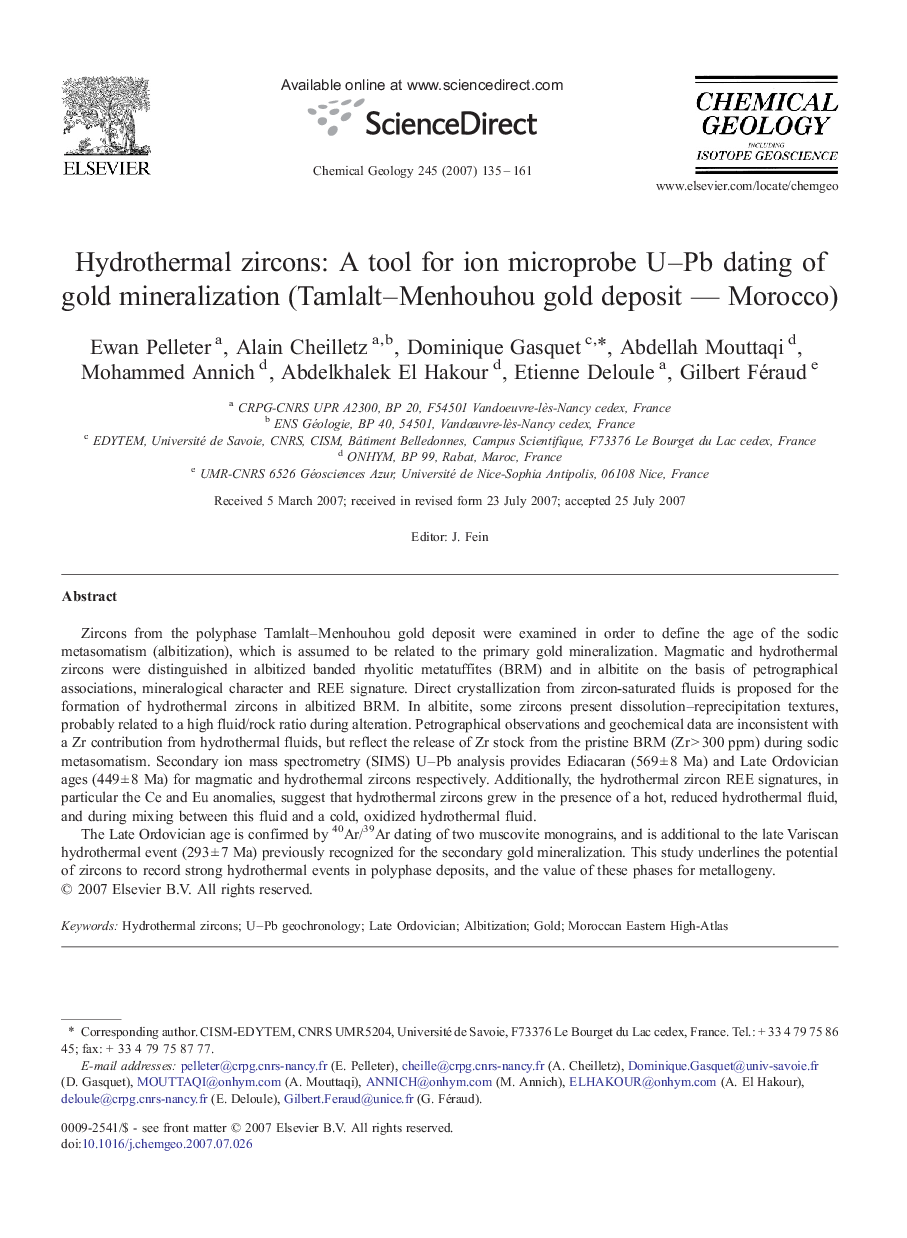| Article ID | Journal | Published Year | Pages | File Type |
|---|---|---|---|---|
| 4700922 | Chemical Geology | 2007 | 27 Pages |
Zircons from the polyphase Tamlalt–Menhouhou gold deposit were examined in order to define the age of the sodic metasomatism (albitization), which is assumed to be related to the primary gold mineralization. Magmatic and hydrothermal zircons were distinguished in albitized banded rhyolitic metatuffites (BRM) and in albitite on the basis of petrographical associations, mineralogical character and REE signature. Direct crystallization from zircon-saturated fluids is proposed for the formation of hydrothermal zircons in albitized BRM. In albitite, some zircons present dissolution–reprecipitation textures, probably related to a high fluid/rock ratio during alteration. Petrographical observations and geochemical data are inconsistent with a Zr contribution from hydrothermal fluids, but reflect the release of Zr stock from the pristine BRM (Zr > 300 ppm) during sodic metasomatism. Secondary ion mass spectrometry (SIMS) U–Pb analysis provides Ediacaran (569 ± 8 Ma) and Late Ordovician ages (449 ± 8 Ma) for magmatic and hydrothermal zircons respectively. Additionally, the hydrothermal zircon REE signatures, in particular the Ce and Eu anomalies, suggest that hydrothermal zircons grew in the presence of a hot, reduced hydrothermal fluid, and during mixing between this fluid and a cold, oxidized hydrothermal fluid.The Late Ordovician age is confirmed by 40Ar/39Ar dating of two muscovite monograins, and is additional to the late Variscan hydrothermal event (293 ± 7 Ma) previously recognized for the secondary gold mineralization. This study underlines the potential of zircons to record strong hydrothermal events in polyphase deposits, and the value of these phases for metallogeny.
